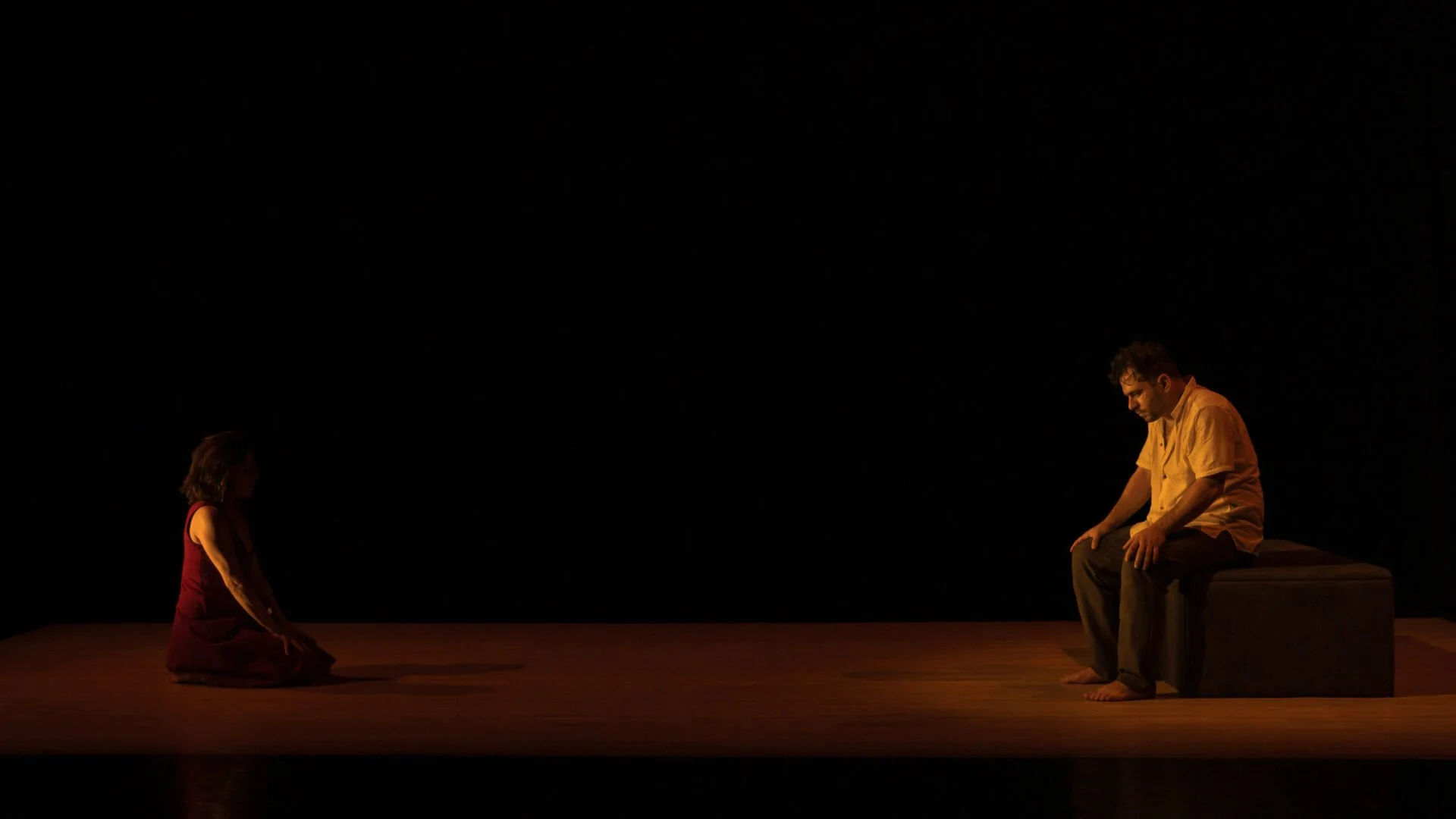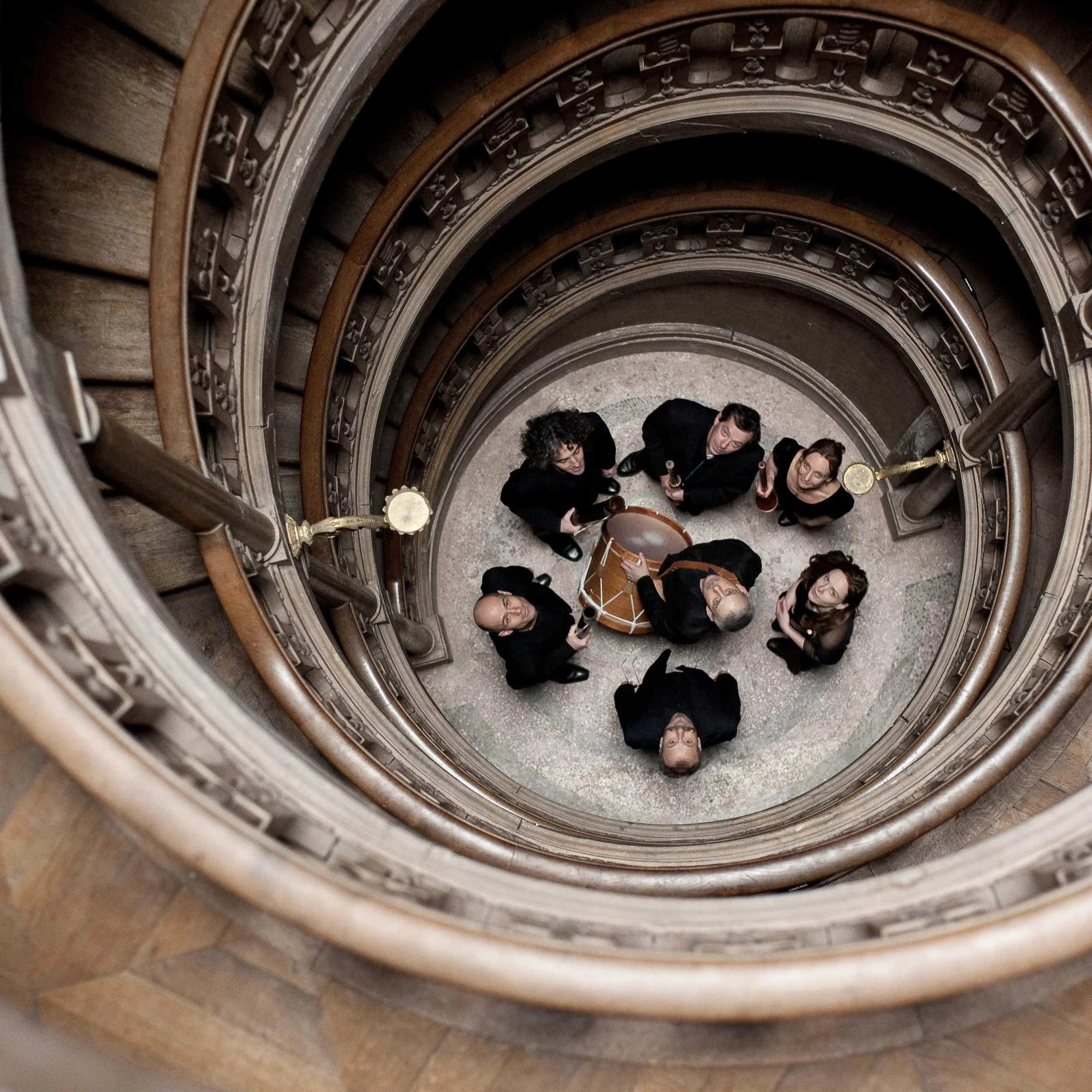Dance review: Canadian icon Louise Lecavalier's Stations enthralls
The founder of Fou glorieux shares her most personal work to date, wild and transfixing
Louise Lecavalier. Photo by Andre Cornellier
DanceHouse, in partnership with SFU Woodward’s Cultural Programs, presents Stations to November 26 at the Fei & Milton Wong Experimental Theatre at the Goldcorp Centre for the Arts.
FOR THE FIRST several minutes of Stations (you lose track of time), dancer-choreographer Louise Lecavalier’s feet never leave the ground, yet the Canadian icon of contemporary dance journeys all across the stage. Dressed in a black tank top with flowy pants with socks to match, she shifts her feet on the floor at 45-degree angles side to side, sometimes so speedily it’s as if she’s on fast-forward. The sweeping gestures of her arms are the focus: the founder of Fou Glorieux swoops and slices them all around her, sometimes shaking her hands or pointing one finger up and down on hyperspeed, violently.
The artist’s new solo has no barrel jumps—her signature move from her nearly two decades as the face and star of Edouard Lock’s La La La Human Steps where she would fling herself into the air to execute a horizontal pirouette or two before landing in a partner’s arms—but it’s as thrilling as anything from the span of the movement master’s portfolio.
There are four distinct sections in the work, which could be interpreted as the seasons of life, the mood morphing from inquisitive and tentative to playful and celebratory. There are moments where the veteran dancer—who, over the years, has worked with David Bowie, Frank Zappa, Tedd Robinson, and Crystal Pite—seems to be unaccepting of what’s come her way, shaking her head as if saying no ever faster or sprinting on the spot, racing against time. She punctuates these with a frantic energy at times, a more meditative grace at others. Then there are instances of childlike joy, where she springs up and down or jumps backward over and over, punkily pogoing.
Stations is the artist’s most personal work to date and marks the first time the 63-year-old Order of Canada recipient has performed a solo show of her own choreography. She selected the work’s name because of its many references, from the Passion of Christ to mundane subway stops to unattainable places in outer space. Analyze and interpret the meaning how you will; what will linger long after the show’s close (upon which the opening-night audience gave Lecavalier a standing ovation, the artist close to tears in receipt) is Lecavalier’s sheer kinetic breadth and command. That’s not to say all of her sequences are physically outrageous; she’s that rare artist who can captivate by the most minute of movements, each one loaded with intention.
Whether daring or diminutive, her phrases are transfixing. She has the audience in her hands from beginning to end. Her platinum-blond hair, which goes a bit below her shoulders, is, as always, very much part of the choreography, whipping and wild.
Each section of Stations escalates in intensity musically, featuring contributions by guitarist Antoine Berthiaume, saxophonist Colin Stetson, electronic group Suuns and Jerusalem, and singers Teho Teardo and Blixa Bargeld. There’s often a steady metronome-like backbeat—amid otherworldly sounds that occasionally feature fluttery sax and twangs of minor-key guitar—that gets faster to reflect Lecavalier’s pace. Alain Lortie’s lighting design gradually shifts from white to blue-green to orange-y to swampy green, like a mood ring.
At one of the rare points in Stations where the music has lyrics, there is a track by Teardo and Bargeld with the lines “I sing what I sing best/Black/The blackest/Until it gets to the other side/And there’s no more/No more darkness left”. Lecavalier’s body is her voice, and perhaps this is what keeps her dancing all these years later, unapologetically, fiercely, stunningly: to drive away all the dullness and shadows.














